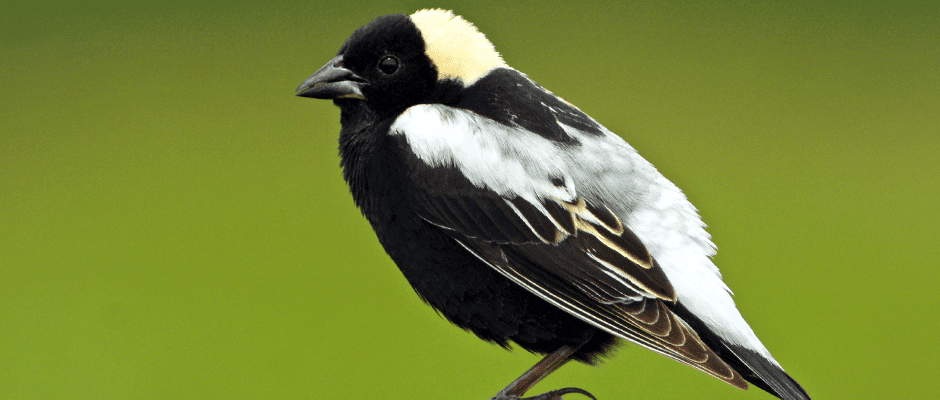Share this article
Bobolinks reliance on rice raises new concerns
Bobolinks (Dolichonyx oryzivorus) travel 12,000 miles each year to their North American breeding areas, where they have experienced habitat loss and degradation for decades. The declining grassland bird may also face threats in South America, where a recent study found the bird relies heavily on rice fields for food, and those fields are often farmed with pesticides.
“I found one-third of their diet was rice,” said Rosalind Renfrew, lead author on the study published in The Condor: Ornithological Applications.
The bobolink summers between British Columbia and New Brunswick, but Renfrew, a conservation biologist with the Vermont Center for Ecostudies, wondered what threats this “iconic species often used to represent grassland birds” may face on its South American wintering grounds. To answer this question, she investigated the species’ nutritional reliance on cultivated rice during wintertime and its potential consequences.
Renfrew and her colleagues netted the birds from populations breeding in Nebraska, North Dakota and Vermont in 2008. Before the birds’ August molt, the team collected flight feathers, which had grown on the wintering grounds, to examine for dietary clues. Analyzing carbon in the feathers, they confirmed that rice constituted a significant part of their winter diet.
“They are relying on rice most heavily when energy demands are highest,” Renfrew said, “when nutritional demands are important for both the molt and preparing for northbound migration.”
That raises concerns, she said, because of pesticide use on rice farms in some South American countries. The findings not only have potential implications for the already dwindling bobolink population, Renfrew said, but for the broader ecosystem as well.
“If pesticides are affecting bobolinks, they’re affecting a suite of species that also use rice fields,” she said.
Renfrew is following up with a paper about the levels of pesticide exposure in bobolinks feeding on rice in Bolivia.
Header Image: A bobolink perches on a stump in Vermont. ©Doug Gimler








